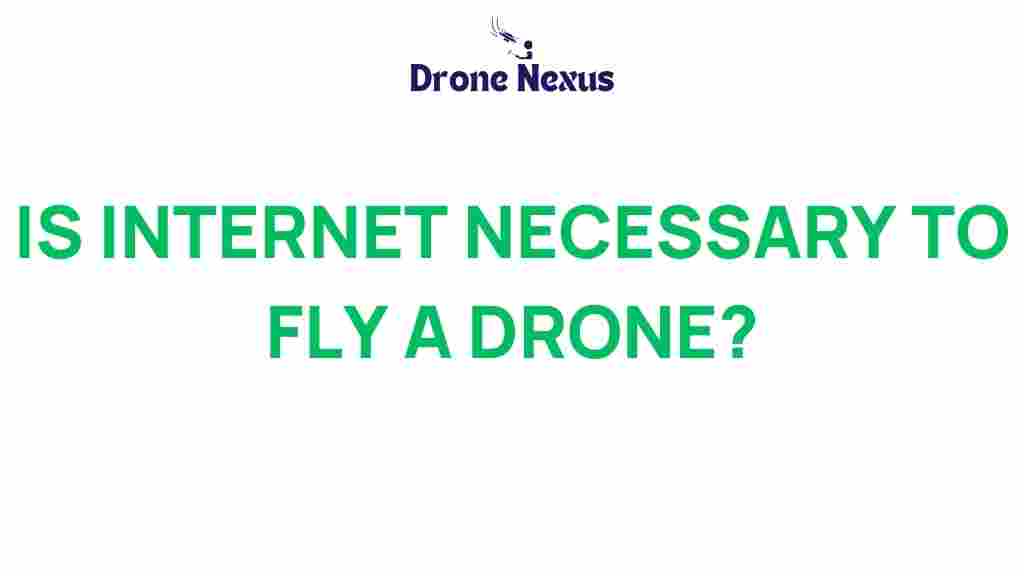Is Internet Connectivity Essential for Safe Drone Operation?
In today’s technology-driven world, the use of drones has surged, making their safe operation a priority for both recreational and commercial users. With the advent of advanced features such as real-time video streaming, automated flight paths, and enhanced navigation systems, the question arises: Is internet connectivity essential for safe drone operation? This article will explore the implications of internet connectivity on drone operation, the benefits it brings, and how to ensure a safe flying experience.
The Importance of Drone Operation Safety
Before diving into the specifics of internet connectivity, it’s crucial to understand why safety is paramount in drone operation. Drones have gained popularity for various applications, including:
- Photography and videography
- Agricultural monitoring
- Search and rescue missions
- Delivery services
- Infrastructure inspection
With these applications, the potential for accidents or violations of regulations is considerable. A safe drone operation not only protects the operator and bystanders but also upholds the integrity of the airspace and the privacy of individuals.
Benefits of Internet Connectivity in Drone Operation
Having reliable internet connectivity during drone operation can enhance safety in several ways:
- Real-Time Data Access: Internet connectivity allows pilots to access real-time weather updates, air traffic information, and no-fly zone alerts, which are critical for planning safe flight paths.
- Remote Control and Monitoring: Many modern drones can be controlled remotely via mobile devices or computers, requiring a stable internet connection for effective maneuvering.
- Data Upload and Analysis: Drones equipped with various sensors can upload data for immediate analysis, enabling timely decision-making and operational adjustments.
- Firmware Updates: Drones often require firmware updates to maintain optimal performance and safety features. Internet connectivity ensures that updates can be downloaded and installed promptly.
Different Scenarios of Drone Operation
To evaluate the necessity of internet connectivity for safe drone operation, let’s consider different scenarios:
1. Recreational Drone Operation
For enthusiasts flying drones in open spaces, internet connectivity might not be essential. However, having it can enhance the experience through:
- Access to community forums for tips and guidelines
- Real-time weather alerts to avoid flying in adverse conditions
2. Commercial Drone Operation
In commercial settings, such as delivery services or agricultural monitoring, internet connectivity becomes crucial:
- Efficient route planning using real-time traffic data
- Compliance with regulatory requirements through constant monitoring of airspace
3. Emergency Response Drone Operation
Drones used in emergency situations, like search and rescue missions, heavily rely on internet connectivity for:
- Coordination with ground teams
- Access to live feeds and updates from other responders
Step-by-Step Guide to Ensuring Safe Drone Operation
To ensure safe drone operation, follow this step-by-step guide:
- Pre-Flight Check: Always conduct a comprehensive pre-flight check, including battery levels, firmware updates, and functional tests.
- Secure Internet Connection: If possible, ensure a stable internet connection. Use mobile hotspots or portable Wi-Fi devices when flying in remote areas.
- Know the Regulations: Familiarize yourself with local and national regulations concerning drone operation. Some areas may have restrictions that can be checked online.
- Plan Your Flight: Use mapping software to plan your flight path, considering potential hazards and no-fly zones. This can often be done via apps that require internet access.
- Live Data Monitoring: Keep an eye on real-time weather and air traffic data during your operation. Adjust your flight plan as necessary.
Troubleshooting Connectivity Issues During Drone Operation
Even with the best preparations, issues may arise. Here are some troubleshooting tips for connectivity problems:
- Check Device Settings: Ensure that your drone and controlling device are connected properly and that the correct network is selected.
- Restart Devices: Sometimes, a simple restart of both the drone and the controlling device can resolve connectivity issues.
- Move to a Higher Ground: If you’re in a low-lying area, moving to higher ground may improve your signal strength.
- Use Signal Boosters: Consider investing in signal boosters designed for drones, which can enhance connectivity in remote areas.
Conclusion: Balancing Connectivity and Safety in Drone Operation
In conclusion, while internet connectivity is not strictly essential for all types of drone operation, it significantly enhances the safety and efficacy of flights, particularly in commercial and emergency situations. By integrating reliable internet access into your drone operation strategy, you can leverage real-time data, ensure compliance with regulations, and ultimately improve the safety of your flights.
As the drone industry continues to evolve, understanding the relationship between internet connectivity and safe drone operation will be critical for all operators. For more information on drone regulations, visit the Federal Aviation Administration (FAA) website or check out community resources on drone operation best practices.
This article is in the category Technology and created by DroneNexus Team
